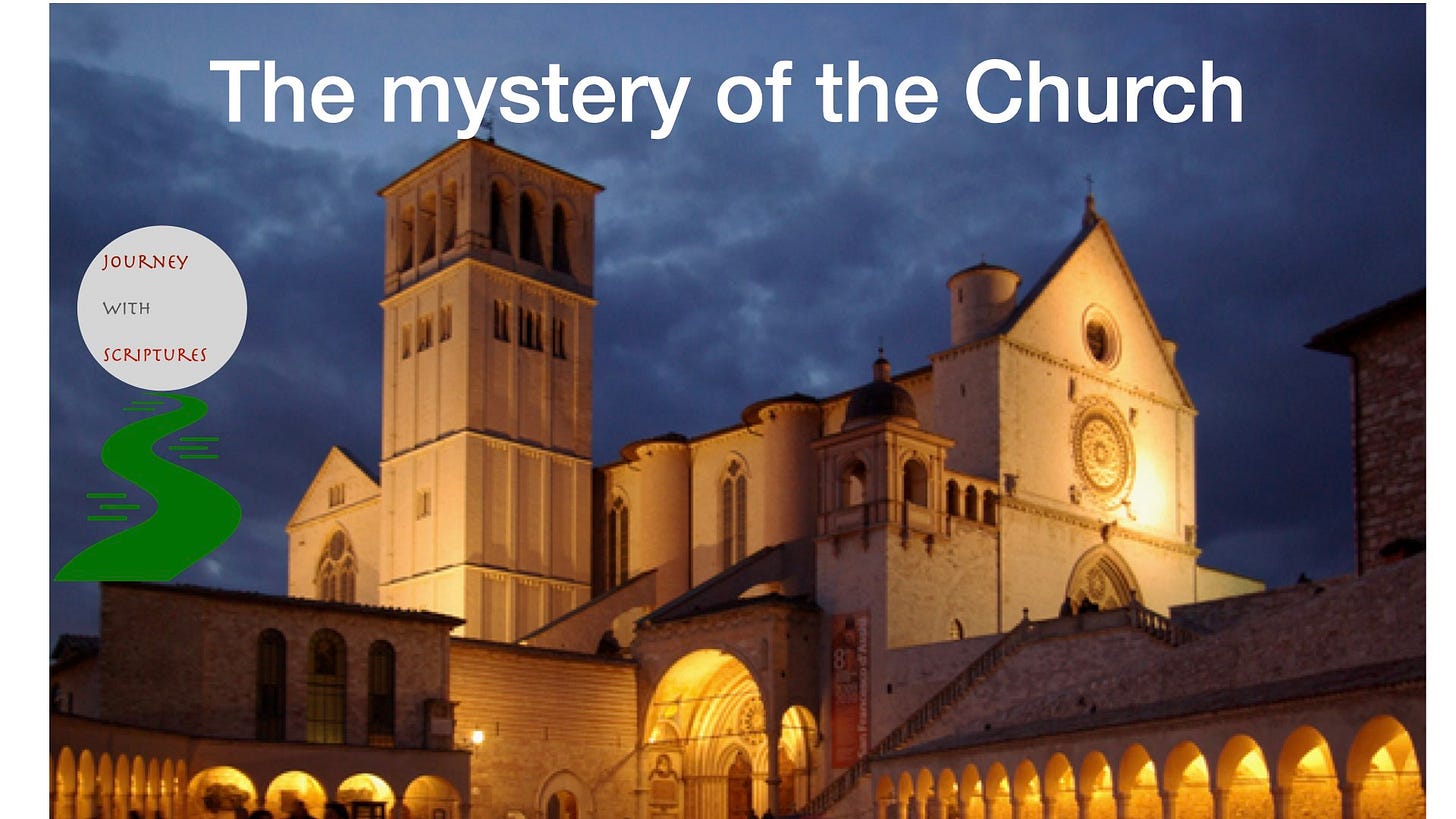The mystery of the Church
November 9, 2023 - Thursday, the Feast of the dedication of the Lateran Basilica
John 2:13–22
There are four Jewish festivals mentioned in John’s Gospel: the Sabbath day - a weekly holiday that falls on our Saturday (John 5:10); the Passover that is celebrated in spring - close to our Easter; The feast of Tabernacles (John 7:2) that falls in Autumn, and the feast of the “rededication of the Temple in Jerusalem” known as the feast of lights that is celebrated in winter, close to our Christmas.
The Gospel mentions three Passover feasts and twice Jesus was in Jerusalem on those occasions. On the first Passover, recorded in today’s Gospel, Jesus cleansed the temple. The second Passover Jesus spent in Galilee. During that time he multiplied five loaves of bread and two fish for five thousand men and gave a long speech on the meaning of that miracle. Finally, the third Passover was the Passover of his death and resurrection.
If we combine all those festivals, we get the message of the Gospel. Jesus is the living temple of God that replaces the temple made of stones. Jesus is the living bread that replaces the manna of the Old Testament. Jesus is the source of living water, the gift of the Holy Spirit. Jesus is the light of the world that enlightens our darkness. Jesus is the Lamb of God that takes away the sin of the world. Finally, Jesus is the resurrection and the life that knows no end.
“This temple has been under construction for forty-six years, and you will raise it up in three days”? Jesus’ body - the living temple of God - was destroyed on Good Friday and in three days, on Easter morning, Jesus raised it up. This event has changed the history of humanity forever and the feast of the cathedral of the Diocese of Rome where the Bishop of Rome presides, known as St. John Lateran reminds us about it.
For nearly 300 years, the Christians - often risking their lives - proclaimed the Gospel across the Roman Empire. Finally, in the year 313 AD, they were given the freedom to worship Christ, the Lord. The Roman Emperor Constantine who granted them that freedom also built a magnificent church on one of the hills of Rome. In the course of history this church was dedicated to Christ the Saviour of the world, John the Baptist, his famous precursor, and John the Evangelist, who left us the Gospel about God who so loved the world that He gave his only Son (John 3:16). By many Christians this church is considered the mother church of all churches in the world.
This feast reminds us of the power of the Gospel proclaimed by Christ’s disciples. Like a tiny seed, it falls into the soil of empires and nations, peoples and cultures, and slowly transforms them from within. It grows into a large tree of the Church, the multitude of peoples from different tribes and nations. This feast also points us towards the heavenly Jerusalem, the beautiful bride of Christ, built by the power of God’s grace.




